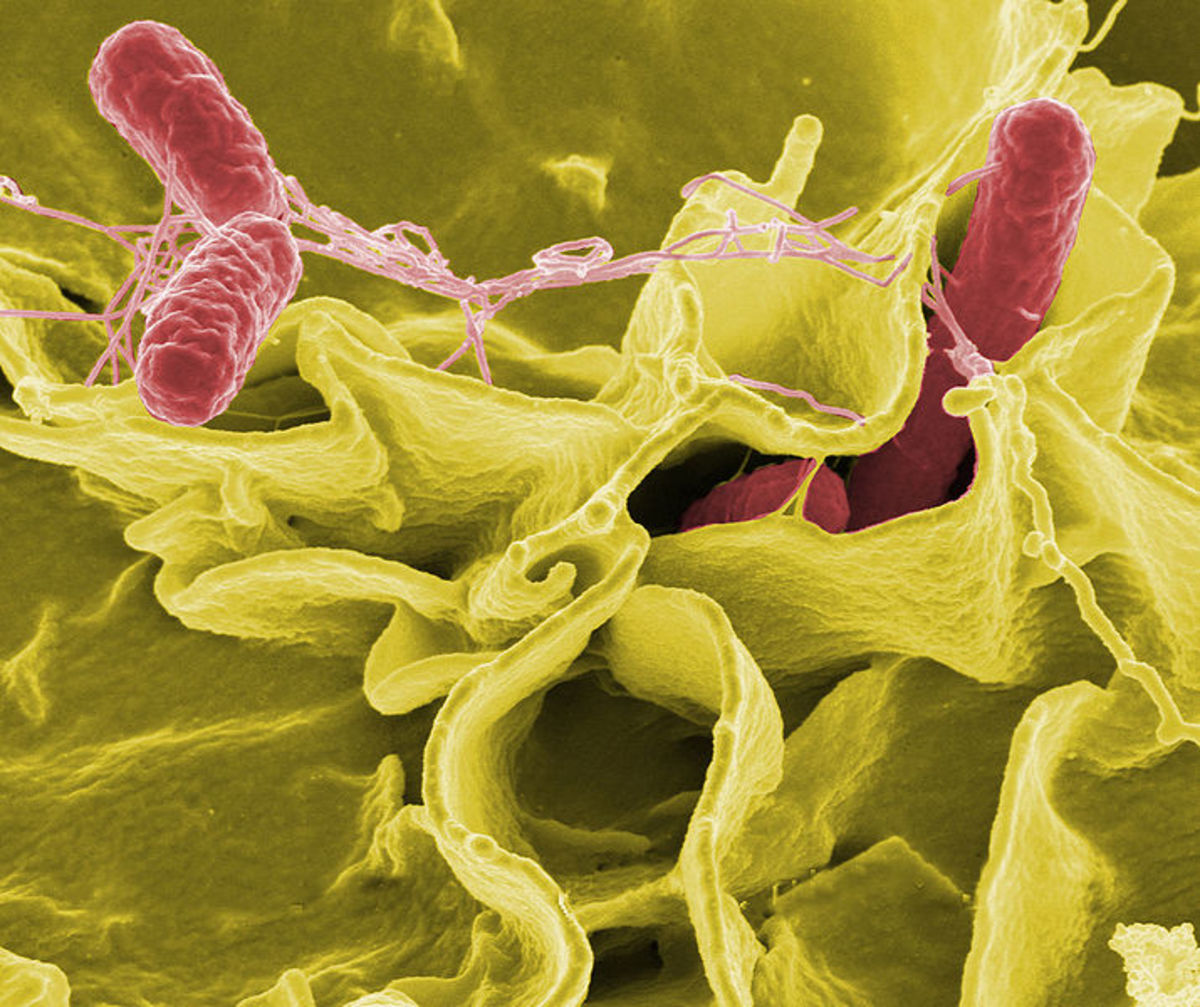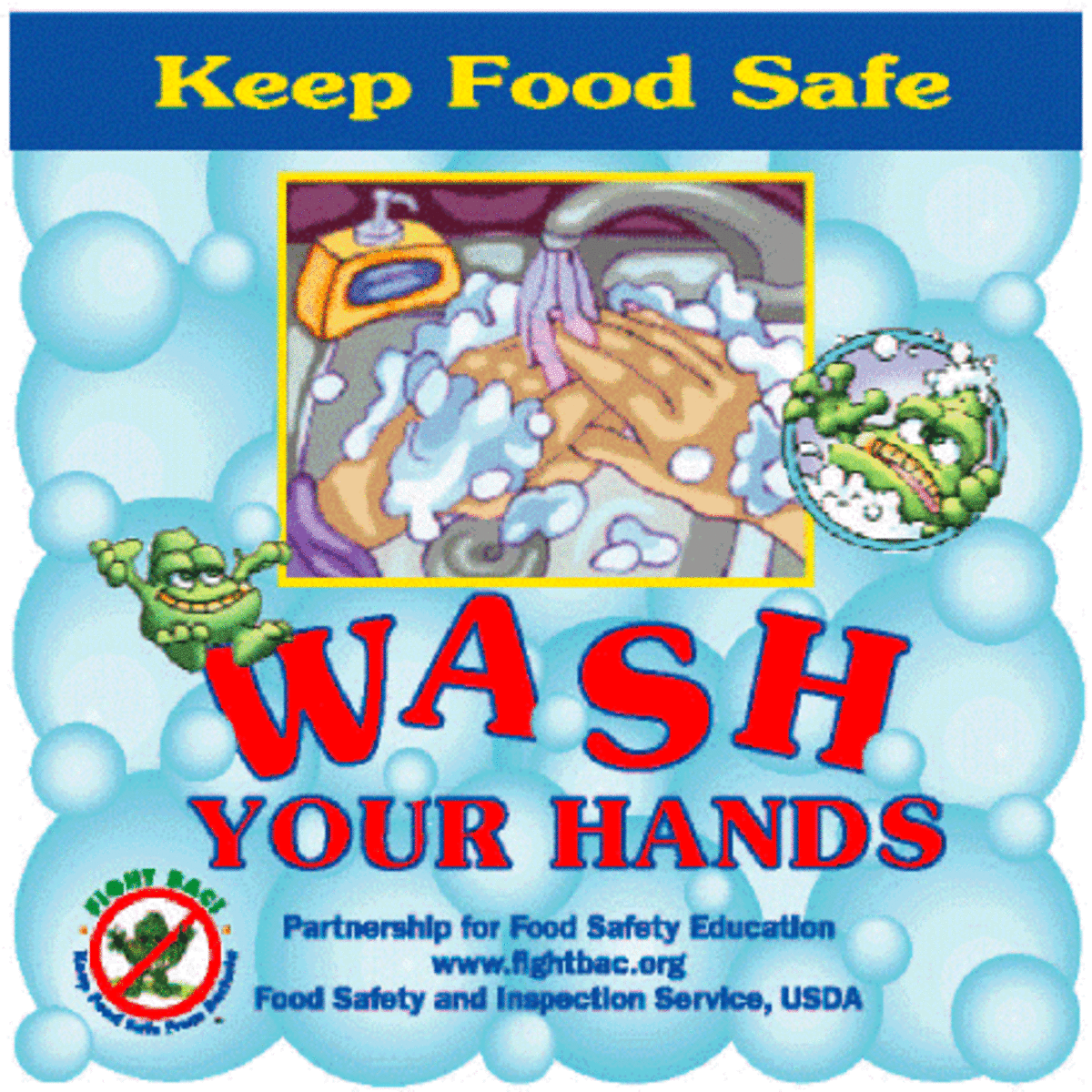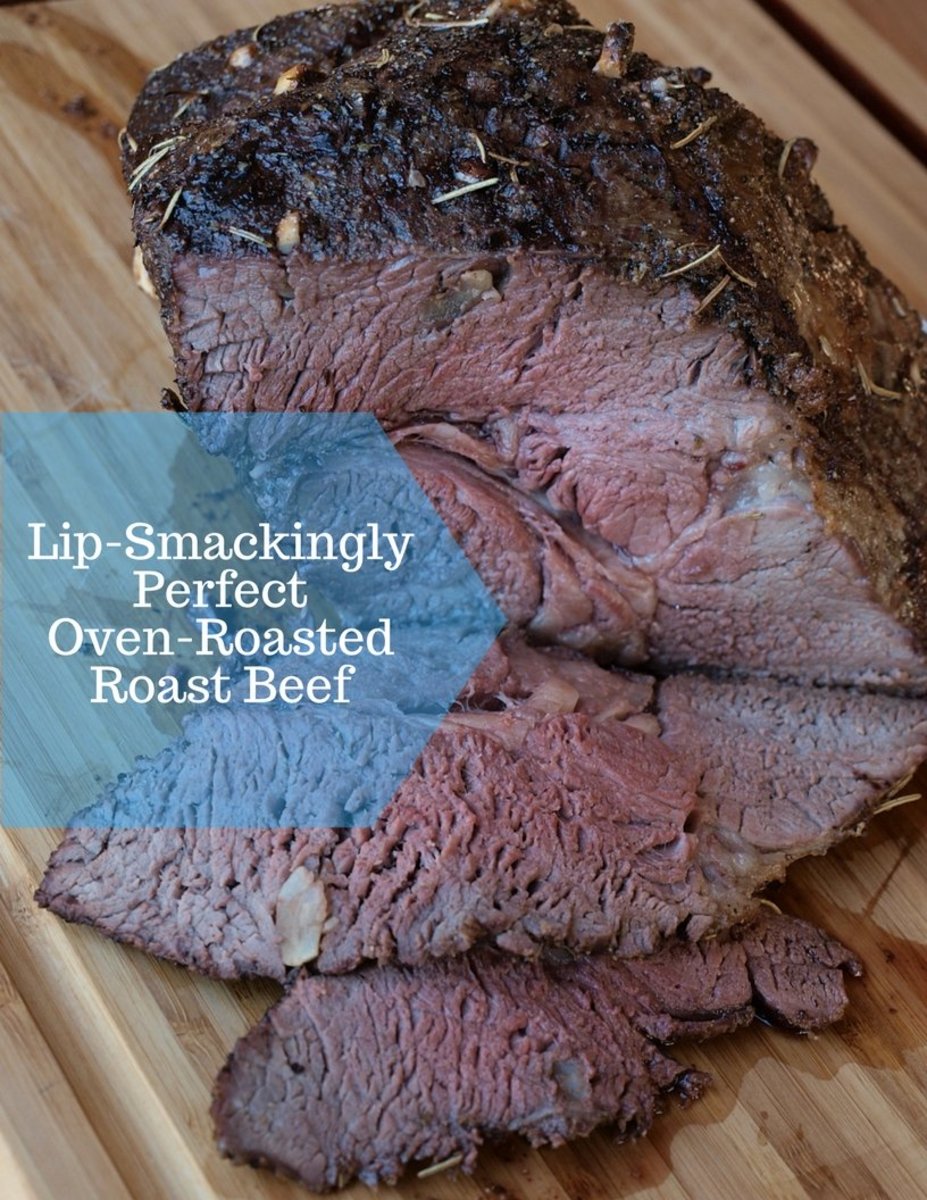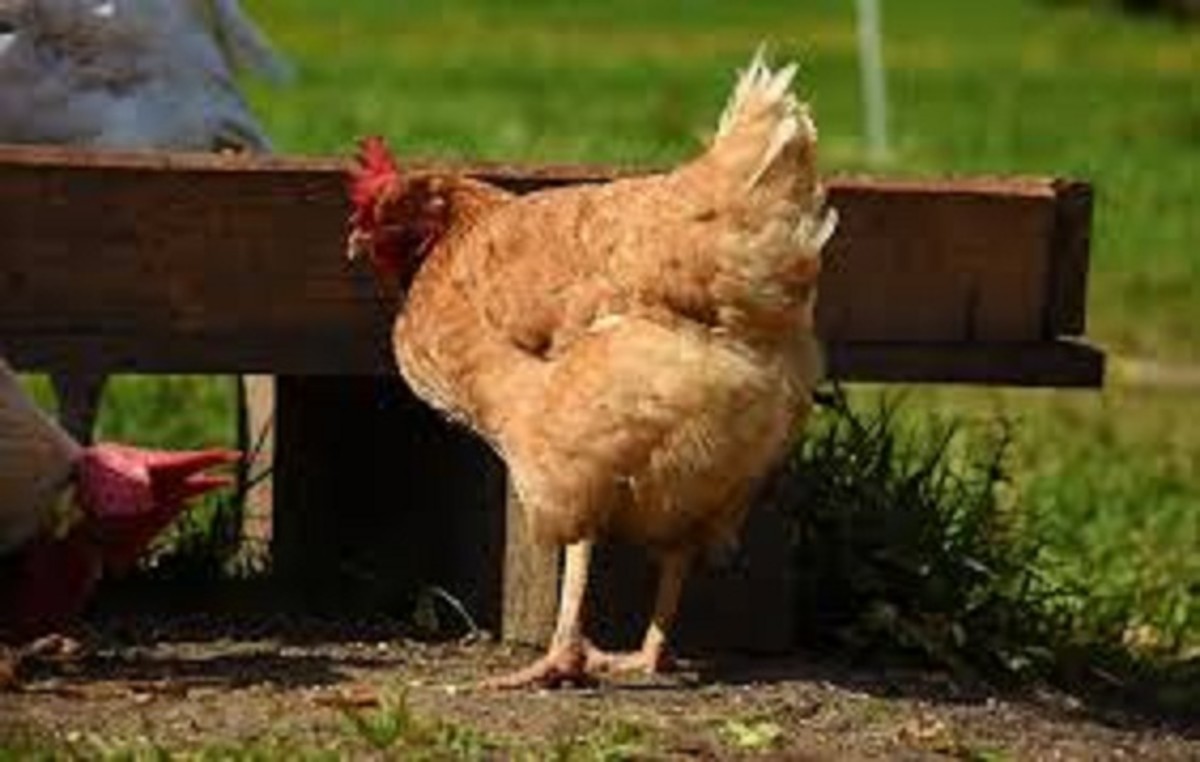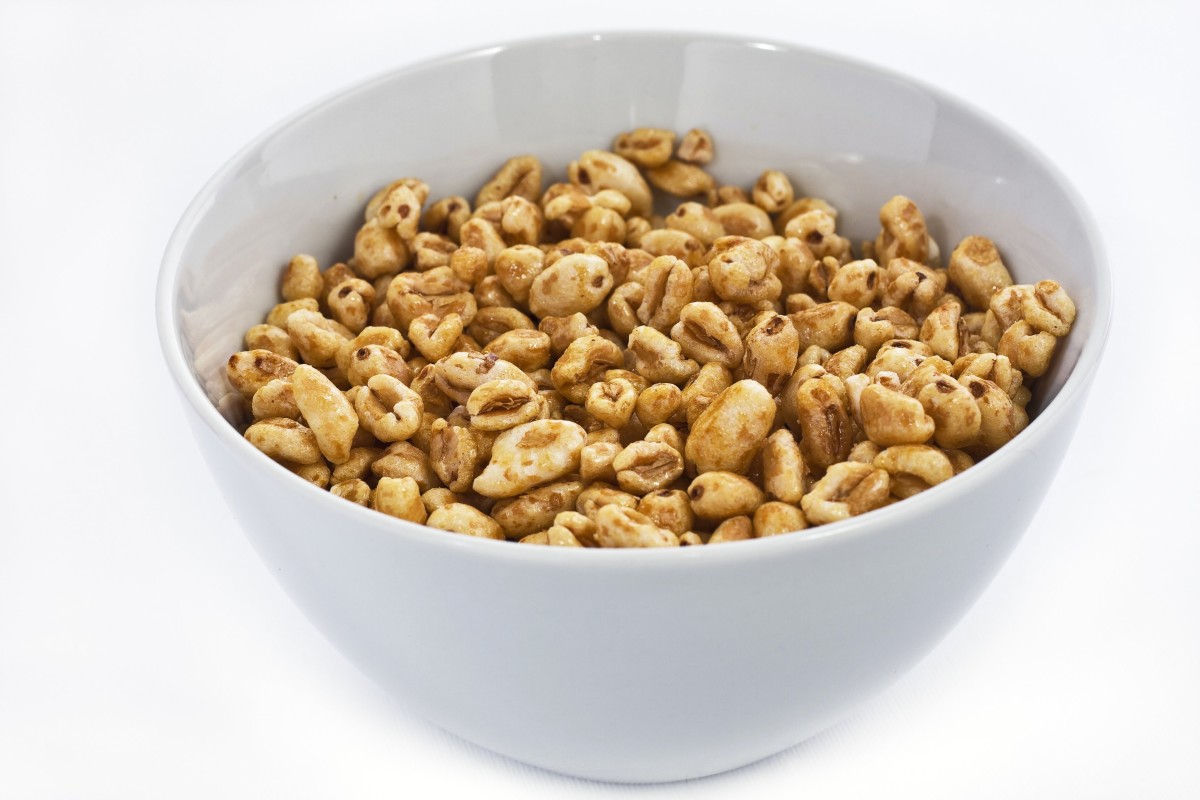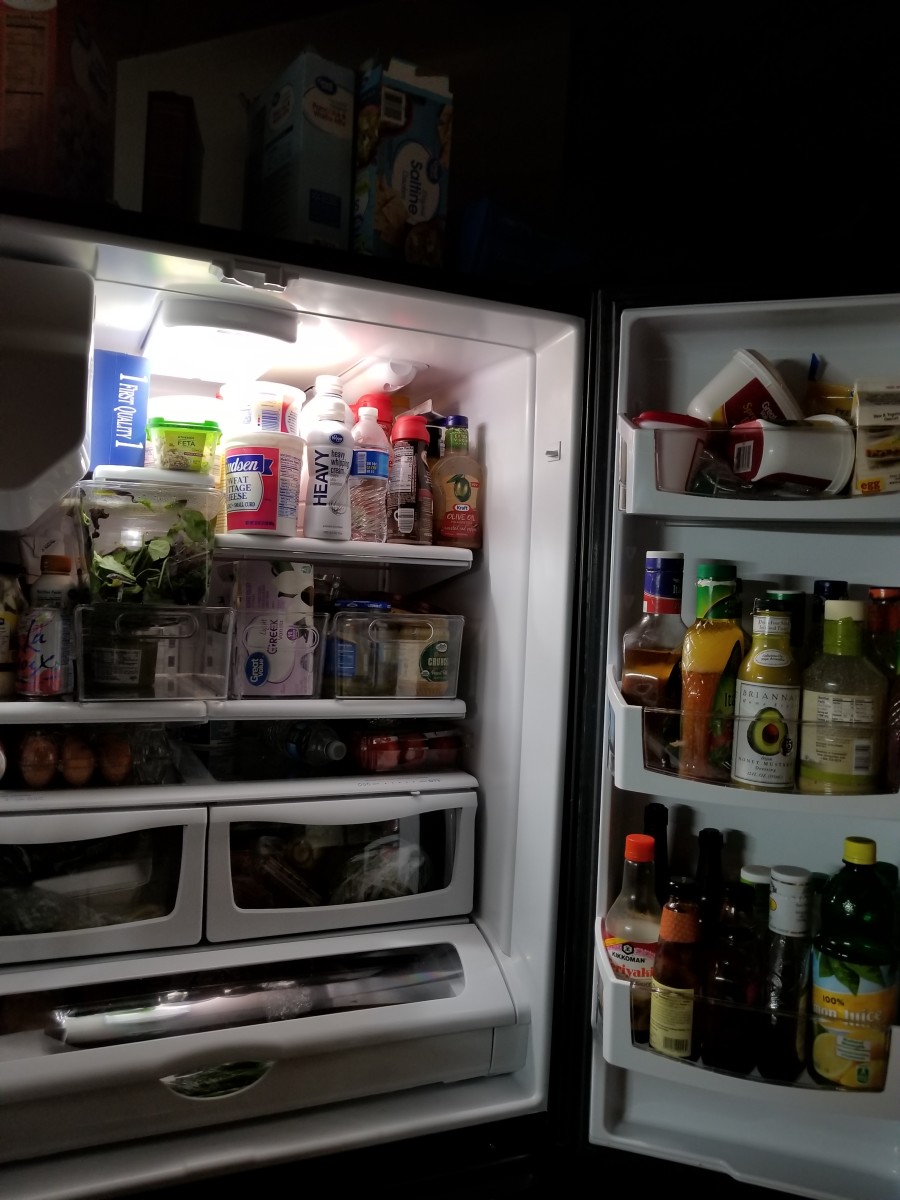What You Need To Know About Food Safety
Why I'm Writing This
Just like most things in life, there are rules you need to follow while cooking to keep you safe. Most of the rules a lot of us know about, but there may be a few you do not. You may learn not to store a tomato with a chicken, but do you know the safe temperature to cook that chicken or not to defrost it in a sink of water full of hot water. Most food safety is as easy as knowing not to stick your fork into an electrical outlet; once you know what not to do, you will not have anything to worry about.
I hope you enjoy reading my article, and if you have any questions or comments, please feel about leave a comment below, even if it is to say hi; I enjoy hearing from Y'all.
Healthy Groceries
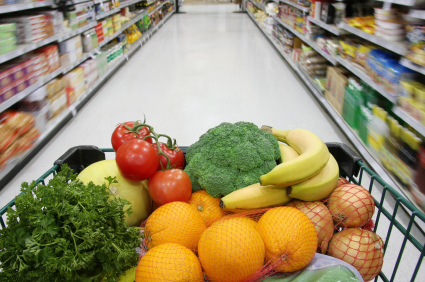
Why Worry About It
While the food supply here in the United States, for the most part, is safe, we have had a few scares with different food-borne illnesses that have taken root in chicken, beef, vegetables, and several other foods. This is rare, and most food-borne disease is from handling food wrong at home or in restaurants. It does happen. There are steps you can take to lessen your chances of getting sick.
The federal government estimates that there are about 48 million cases of food-borne illness annually, equivalent to 1 in 6 Americans yearly. Out of these people who get sick each year resulted in an estimated 129,000 hospitalizations and 3,000 deaths.
Since foodborne illness can be dangerous or even fatal, you must know and practice food safety to help reduce the risk of you and your family accidentally getting sick from contaminated food.
High Risk

Who Is At Risk
While pregnant women, young children, older adults, and people with weakened immune systems are the most at risk of getting sick from contaminated food.
I cannot stress enough that the fact is that everyone is at risk. It does not matter if you are vegan or a meat-eater, if you only eat organic or grow your food, or even if you are poor or rich. If you mishandle your food, you have a chance of getting sick.
If you have someone in your household or you are taking care of someone that falls into this high-risk group, then you need to watch how you are handling their food.
Listeria
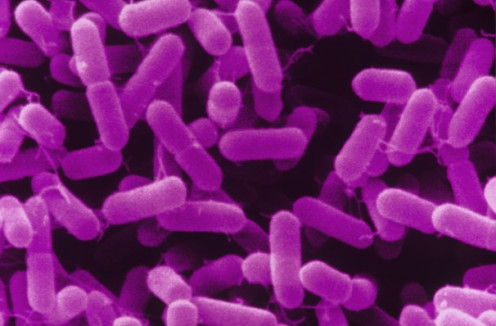
What Makes You Sick
Bacteria and viruses- Are the most common cause of foodborne illness. The severity of food illness varies, depending on which bacteria or virus has contaminated the food. The bacteria and viruses that cause the most illnesses, hospitalizations, and deaths in the United States are Salmonella, Norovirus, Campylobacter, E. Coli, and Listeria.
Parasites -Are organisms that need food and protection from other living organisms known as hosts. In the United States, the most common food-borne parasites are roundworms and tapeworms.
Mold, Toxins, and Contaminants- While bacteria, viruses, and parasites cause most food-borne illnesses. There have been cases where people have gotten sick from natural toxins or chemical toxins. Natural toxins are such as those in some mushrooms and puffer fish. Chemical toxins are from pesticides and other chemicals. While there are some foods like blue cheese that the mold is harmless in, there are some molds that can produce toxins that can cause illness.
Hand Washing The Right Way
How To: Washing Fruits and Vegetables
Step 1- Clean And Wash.
Bacteria, viruses, and other contaminants can hide on your counters, hands, and dirty dishes. As well as fruits and veggies.
Wash your hands- The FDA recommends washing your hands in warm water with soap and scrubbing your hands for at least 20 seconds. The first video to the right will show you the right way to wash your hands.
To teach kids the right way to wash their hands, have them sing the ABC song while scrubbing their hands to ensure the 20-second goal has been met.
When to wash your hands
- Before eating food.
- Before, during, and after preparing food.
- Before and after treating a cut or wound.
- Before and after caring for someone who is sick.
- After handling uncooked eggs, raw meat, poultry, seafood, or juices.
- After blowing your nose, coughing, or sneezing.
- After touching an animal or animal waste.
- After touching the trash.
- After using the bathroom.
Wash counters, cutting boards, utensils, and your dishes.- to make sure that no bacteria, viruses, and other contaminants can spread to your food while you are cooking. You need to make sure that your work area is clean. You can do this by wiping down your counters with bleach water and using your dishwasher to wash your dishes, utensils, and cutting boards. If you hand wash your dwords, you can add a small amount of bleach, up to tablespoons per gallon of water, to rinse your dishes.
Wash your fruits and veggies- Even if you plan on peeling them. Fruits and vegetables have wax, as well as pesticides on them, and also, you never know who might have touched them before you bought them. To see how to do this watch the second video on the right.
Step 2 Separate.
Meat, fish, poultry, and eggs can spread bacteria to other foods, fruits, and veggies if not kept apart. This is the most significant cause of cross-contamination and the cause of a lot of foodborne illnesses.
To prevent this, uncooked meat, fish, poultry, and eggs should never come into contact with other foods, other than for maybe while baking, roasting, or cooking.
Use different cutting boards, one for meat and poultry and one for fruit and vegetables. Even if you clean your cutting boards well between cutting meat, and vegetables, the cuts made into the board by your knife may still hold on to bacteria from the raw meat you just cut, or even cut a few days ago, and can get onto any vegetable or fruit you are about to cut next on that board. The best way to ensure this does not happen is by using a cutting board for each. When the cutting board becomes old or gets into bad shape, replace it.
Also, never place raw meat, fruit, or vegetables on the same plate or bowl, or use the same utensils when handling them.
While grocery shopping is sure to keep raw meat and other food separate. As meat packages could leak or even have bacteria on them. Most stores now have bags you can wrap your heart in before adding them to your cart. If you are able, please do so to keep any leaking that might happen from touching other food. Also, keep the meat in a different place from other food in your cart, but never above anything it could leak. When you check out, ensure your heart is placed in a separate bag away from other food.
Keep raw meat away from other food while in the fridge. Bacteria can spread inside your fridge if the juices of raw meat, poultry, seafood, and eggs drip onto vegetables, fruit, and other foods and contaminate them. To fix this, store meat in an air-tight container or a sealed plastic bag in a bowl, or freeze it if you will not be using them within a day or two. Place the now closed raw meat items at the bottom of the fringe where they cannot drip onto any other food if they get knocked over. Keep eggs in their carton and do not place them in the fridge door, as the temperature there can vary. Finally, never put cooked food on the same plate or bowl that raw food is, or was on, as the juice from the natural food could spread to the cooked.
Meat With Thermometer
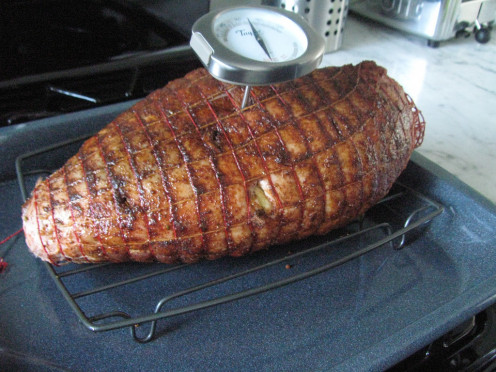
Meat Thermometer I Recommend
Step 3 Cook
Most people think they can tell when their food is done just by looking and feeling it. While this might be correct for some people, for the rest of us, you can not be sure it is unless you check the temperature of your meat and other foods. The FDA says the danger zone is between 40˚ and 140˚ Fahrenheit, this is the temperature where bacteria grows and spread the fastest, and a lot of food will look done at 130˚ F. If you do not already have one, consider buying a food thermometer, I have one listed on the right that I use unless you get a fancy one they are for the most part inexpensive.
When you think your food is done, place the food thermometer in the thickest part of the food, being careful not to touch bone, fat, or gristle as this can read hotter than the food itself. Let the thermometer run for the amount of time recommended by your thermometer. When the thermometer reads the right temperature for the meat you have cooked, your core is now done. If your heart needs to rest, let it do so after the cooking temperature is hit. Clean your food thermometer with hot, soapy water after each use. Keep cooked food above 140˚F using a chafing dish, warming tray, or slow cooker.
When Is It Done?
Food Type
| Rest
| Internal temperature
| Food Type
| Rest
| Internal temperature
| |
|---|---|---|---|---|---|---|
Beef, Pork, Veal, Lamb
| 3 min rest
| 145F
| Ham
| none
| 160F
| |
Turkey, Chicken
| none
| 165F
| Eggs
| none
| Cook until yolk & white are firm
| |
Duck & Goose
| none
| 165F
| Fish
| none
| 145F
| |
Leftovers & Casseroles
| none
| 165F
| Shrimp, Lobster & Crabs
| none
| Flesh pearly & opaque
| |
Scallops
| none
| Milky white or opaque & firm
| Clams, Oysters & Mussels
| None
| Shells open during cooking
|
I
Chill
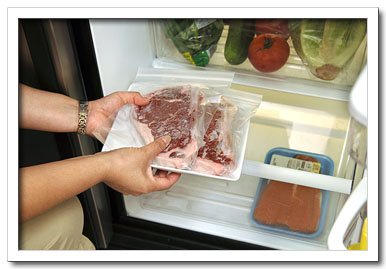
Step 4 Chill
You need to chill your food as soon as you are done eating or when you get home from the store. It can take 2 hours or less for food to go wrong if not put in the refrigerator immediately. Just by placing your leftovers or new food in the fridge as soon as possible, you take a giant step toward keeping yourself and your family from getting sick. Your fridge should be between 40 ˚F and 32 ˚F, and your freezer should be 0 ˚F or below. Do not overpack your fringe, or your freezer, as air needs to be able to move around to chill the food right. Never thaw food on the counter or in a sink of hot water. To soften your meat, do so in the refrigerator or the sink with cold water making sure to change your water every 30 minutes or in the microwave.
The last thing here is when in doubt, toss it out. If you think your food might be wrong, do not taste it; toss it out to be on the safe side. Also, the food has gone wrong if it has a bad smell, mold, a slimy feel, or is off-colored. For fruit and vegetables, the same applies but also, if they feel too soft, bruised, or very limp, toss them out. Never taste anything that you think might be bad, as this is how people get sick.
If you follow these rules regarding food, you will keep yourself, your family, and your loved ones safe. I hope you enjoyed reading this. Please feel free to share and comment below.
Test Your Food Safety Knowledge
view quiz statistics© 2013 Down South Mama


